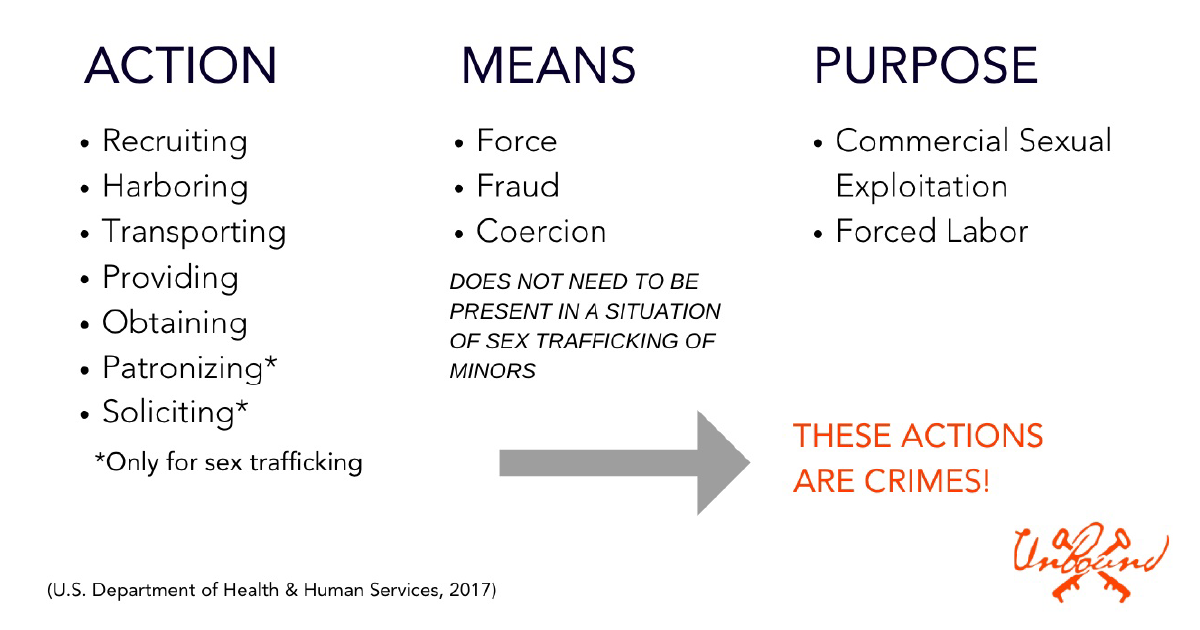By Rochelle Keyhan, Chief Executive Officer of Collective Liberty
For most of us, human trafficking conjures images of young women being kidnapped by traffickers like in the movie Taken. While people are kidnapped and trafficked in this way, it is not even close to the most common forms of trafficking occurring on a daily basis. There are at least 25 types of human trafficking occurring in the United States, and most of them are hidden in plain sight, invisible if you’re looking for violent, Taken-style exploitation.
For example, the girls who met R. Kelly with stars in their eyes and hopes for professional support, and their parents who usually knew where they were but unaware of they were being sex trafficked. Or, the Bahamian workers who struggle to find employment on a daily basis and were so visibly exploited, unpaid for 24/7 work, throughout the Fyre Festival fraud. Our collective attention focused on the thousands of dollars people readily had available to buy tickets and load onto festival wristbands, while hardly exploring the impact of the labor trafficking and exploitation of Bahamian workers, on whose backs the entire fraud was arduously built.
When we spend our energy looking for visible signs of force, or kidnapping, we overlook the people whose life circumstances make them vulnerable to emotional, coercive abuse... the kind that has no visible bruises. The best way to understand, and to be able to identify, human trafficking is by focusing on the behavior of the traffickers. Using the “Action, Means, Purpose” model (above)* of understanding the criminal statutes is one helpful way to focus on offenders.
Focusing on the traffickers
In determining whether trafficking is occurring, it is important to focus on the actions of the traffickers, not the victims. That simple shift in approach has a dramatic impact on the way victims are approached, and the way they experience the scrutiny of investigations. The means by which the traffickers achieve their actions is also an important one to understand in a nuanced way. As in Taken, force is one component to traffickers achieving their actions, but fraud and coercion are equally relevant and even more common than force.
When we examine situations of human trafficking through the actions taken by potential traffickers, and the means by which they may have achieved those actions, we successfully shift our focus onto the offenders (where it belongs) and off of the victims. It then becomes so much easier to identify the involuntary nature of the commercial sex or labor in which the victim was being made to engage. We also remove blame and shame from the victims and place them directly on the traffickers themselves.
While Collective Liberty is working to train the nation’s law enforcement, and help this shift in approach catch on across the country, there are tangible ways you can help shift the culture as well.
Ways you can help shift the culture around trafficking:
- When you see news coverage of potential exploitation, ask questions and hold the news accountable. Comment on social media feeds with questions and concerns with gaps in the stories, and write letters to the editor.
- For example, in the Fyre Festival coverage, the Bahamian workers who were not paid any wages was rarely part of the conversation beyond a mere sentence or two in the broader “millennials were duped” narrative. It is important to balance that with “Are charges for this labor exploitation also being explored?” and “Is anything being done to right the wrongs against the trafficked Bahamian labor force?”
- For example, in the Fyre Festival coverage, the Bahamian workers who were not paid any wages was rarely part of the conversation beyond a mere sentence or two in the broader “millennials were duped” narrative. It is important to balance that with “Are charges for this labor exploitation also being explored?” and “Is anything being done to right the wrongs against the trafficked Bahamian labor force?”
- When news articles about foreign nationals in the sex trade emphasize the lack of English skills, lack of control of their own passports and documentation, living at the site of exploitation with their movement completely controlled, and no schedule or breaks available to them, don’t accept the narrative that this is a “prostitution operation.” Free will and consent are coerced when the person selling you (1) controls your housing, (2) has possession of your government documents, (3) and forces you to work 24/7.
- When you eat at restaurants and shop at grocery stores, ask where they purchase their meat and produce, and carefully decide on your chocolate and tea purchases. Those industries have high instances of labor trafficking, and distributors should be expected to have transparency in their labor supply chains. You’d be surprised how often restaurants can answer these questions! And if they can’t - at least you’ve planted a seed of curiosity that could lead to accountability.
We hope January, National Slavery and Human Trafficking Prevention Month, can be a motivator for us all to take small steps in our everyday lives to shift our collective focus onto traffickers and exploitation, so that together we can create a culture that refuses to tolerate human trafficking.
* The "Action Means Purpose" model graphic above is used with permission from Unbound Fort Worth.

